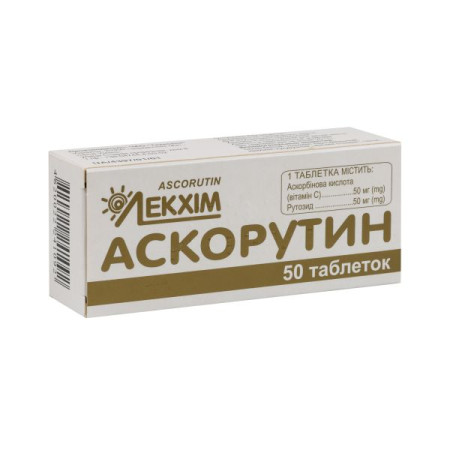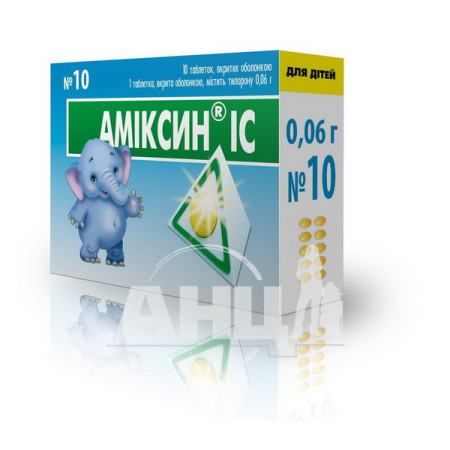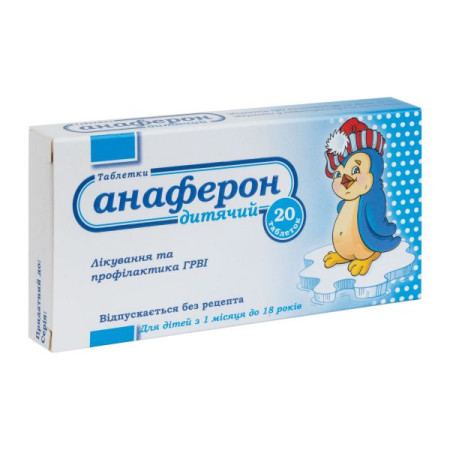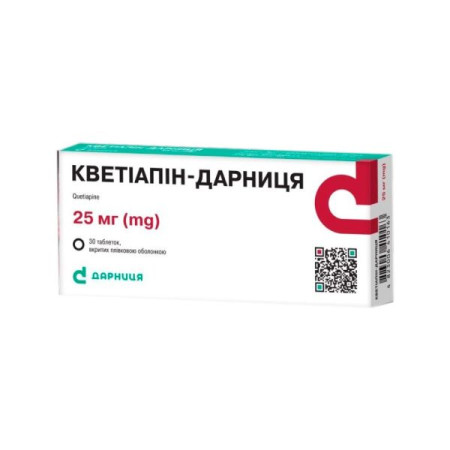In-Aliter tablets blister 4 mg/1.25 mg No. 30

Instructions for use In-Aliter tablets blister 4 mg/1.25 mg No. 30
Composition
active ingredients: perindopril, indapamide;
1 tablet contains 2 mg perindopril tert-butylamine, equivalent to 1.669 mg perindopril, and 0.625 mg indapamide,
or 4 mg perindopril tert-butylamine, equivalent to 3.338 mg perindopril, and 1.25 mg indapamide,
or 8 mg perindopril tert-butylamine, equivalent to 6.676 mg perindopril, and 2.5 mg indapamide;
Excipients: lactose monohydrate; microcrystalline cellulose; crospovidone; sodium bicarbonate; colloidal anhydrous silica; magnesium stearate.
Dosage form
Pills.
Main physicochemical properties: round biconvex tablets from white to almost white in color.
Pharmacotherapeutic group
Combinations of angiotensin-converting enzyme (ACE) inhibitors. Perindopril and diuretics. ATX code C09B A04.
Pharmacological properties
Pharmacodynamics. IN-ALITER is a combination of the ACE inhibitor perindopril tert-butylamine and the sulfonamide diuretic indapamide. Its pharmacological action is due to the properties of each component (perindopril and indapamide) and their additive synergism.
Mechanism of action. IN-ALITER has an additive synergistic effect of the two antihypertensive components.
Mechanism of action of perindopril. Perindopril is an ACE inhibitor that converts angiotensin I to angiotensin II (a vasoconstrictor substance), additionally stimulates the secretion of aldosterone by the adrenal cortex and the breakdown of bradykinin (a vasodilating substance) to inactive heptapeptides. Inhibition of ACE leads to: a decrease in aldosterone secretion; an increase in plasma renin activity, while aldosterone does not have a negative effect; a decrease in total peripheral vascular resistance due to the predominant effect on muscle and renal vessels; there is no water and salt retention or reflex tachycardia, even with long-term treatment. In addition, perindopril reduces blood pressure (BP) in patients with normal and low plasma renin levels. Perindopril acts through its active metabolite perindoprilat. Other metabolites are inactive. Perindopril reduces cardiac work due to a vasodilatory effect on the veins (possibly due to changes in prostaglandin metabolism) - reducing preload, and due to a decrease in total peripheral vascular resistance - reducing afterload on the heart. Studies conducted with the participation of patients with heart failure have shown that the use of perindopril leads to a decrease in the filling pressure of the left and right ventricles, a decrease in total peripheral vascular resistance, an increase in cardiac output and an improvement in the cardiac index, an increase in regional blood flow in the muscles. The indicators of physical exercise tests are improved.
Mechanism of action of indapamide. Indapamide is a sulfonamide derivative with an indole ring, pharmacologically related to thiazide diuretics. Indapamide inhibits sodium reabsorption in the cortical segment of the kidneys. This increases the excretion of sodium and chlorides and, to a lesser extent, potassium and magnesium in the urine, thereby increasing urine output and providing an antihypertensive effect.
PICXEL is a multicenter, randomized, double-blind, controlled study that evaluated the effect of the combination of perindopril and indapamide on left ventricular hypertrophy compared with enalapril monotherapy, as assessed by echocardiography. In PICXEL, patients with hypertension and left ventricular hypertrophy (left ventricular mass index > 120 g/m2 in men and > 100 g/m2 in women) were randomized into two groups: one group of patients received 2 mg perindopril tert-butylamine (equivalent to 2.5 mg perindopril arginine)/0.625 mg indapamide, and the other group received 10 mg enalapril once daily for one year. The doses were adjusted according to blood pressure (BP): perindopril tert-butylamine dose was increased to 8 mg (equivalent to 10 mg perindopril arginine), indapamide to 2.5 mg, and enalapril to 40 mg once daily. The initial dose was continued by 34% of patients in the perindopril/indapamide group (2 mg perindopril and 0.625 mg indapamide) and 20% in the enalapril group (10 mg). Among all randomized patients, the left ventricular mass index at the end of treatment decreased significantly more in patients receiving perindopril/indapamide (–10.1 g/m²) than in the enalapril group (–1.1 g/m²). The difference between the two groups was -8.3 (95% confidence interval [CI] -11.5 to -5.0, p < 0.0001). The best effect on reducing left ventricular mass index was achieved with the maximum doses of perindopril/indapamide (10 mg/2.5 mg). Blood pressure was reduced more effectively in the perindopril/indapamide group: the difference in mean BP reduction between the two groups of patients was -5.8 mmHg (95% CI -7.9 to -3.7, p < 0.0001) for systolic blood pressure and -2.3 mmHg (95% CI -3.6 to -0.9, p = 0.0004) for diastolic blood pressure.
Pharmacodynamic effects associated with perindopril. Perindopril effectively lowers blood pressure in all degrees of arterial hypertension: mild, moderate and severe. Reduction of systolic and diastolic blood pressure is observed both in the supine and standing positions. The maximum antihypertensive effect develops 4-6 hours after taking a single dose and persists for more than a day. Perindopril has a high level of final ACE blockade (approximately 80%) 24 hours after taking it. In patients who have responded to treatment, normalization of blood pressure is achieved after a month and is maintained without the occurrence of tachyphylaxis. Discontinuation of therapy is not accompanied by a withdrawal syndrome. Perindopril has vasodilatory properties, restores the elasticity of large arteries, corrects histomorphometric changes in arterial resistance and reduces left ventricular hypertrophy. The addition of a thiazide diuretic, if necessary, leads to additional synergy. The combined use of an ACE inhibitor and a thiazide diuretic reduces the risk of hypokalemia, which can occur when a diuretic is prescribed as monotherapy.
Pharmacodynamic effects associated with indapamide. When used as monotherapy, indapamide has an antihypertensive effect that lasts 24 hours. This effect is manifested at doses in which the diuretic properties are minimal. The antihypertensive effect of indapamide is proportional to the improvement of arterial elasticity and the reduction of arteriolar resistance and total peripheral vascular resistance. Indapamide reduces left ventricular hypertrophy. When the dose is exceeded, the antihypertensive effect of thiazide and thiazide-like diuretics reaches a plateau, while the number of undesirable effects increases. If the treatment is not effective enough, the dose of the drug should not be increased. Moreover, as shown in studies of different durations (short, medium and long) in patients with hypertension, indapamide does not affect lipid metabolism (triglycerides, low and high density lipoproteins) and does not affect carbohydrate metabolism, even in patients with hypertension and diabetes mellitus.
Pharmacokinetics. The pharmacokinetic properties of perindopril and indapamide in the composition of the drug IN-ALITER do not differ from the properties when they are used separately.
Pharmacokinetic properties of perindopril.
Absorption and bioavailability. After oral administration, perindopril is rapidly absorbed, with peak plasma concentrations occurring within 1 hour. The plasma half-life of perindopril is 1 hour. Since food intake reduces the conversion of perindopril to perindoprilat and, consequently, its bioavailability, perindopril should be taken orally in a single daily dose in the morning before meals.
Distribution: The volume of distribution of unbound perindoprilat is approximately 0.2 l/kg. The binding of perindoprilat to plasma proteins is 20%, mainly to ACE, and is concentration-dependent.
Biotransformation. Perindopril is a prodrug. Thus, 27% of the dose of perindopril enters the bloodstream in the form of the active metabolite perindoprilat. In addition to the active perindoprilat, perindopril forms 5 more inactive metabolites. The maximum concentration of perindoprilat in the blood plasma is reached after 3-4 hours.
Excretion: Perindoprilat is excreted in the urine, with a terminal half-life of the unbound fraction of approximately 17 hours. Steady state is reached within 4 days.
Linearity/non-linearity: A linear relationship between perindopril dose and plasma concentration has been demonstrated.
Special categories of patients
Elderly patients: The elimination of perindoprilat is reduced in elderly patients and in those with cardiac or renal insufficiency.
Renal impairment: For patients with renal insufficiency, the dose should be adapted depending on the degree of renal impairment (creatinine clearance).
Need for dialysis. The dialysis clearance of perindoprilat is 70 ml/min.
Cirrhosis of the liver. The kinetics of perindopril are altered in patients with cirrhosis of the liver: the hepatic clearance of the parent molecule is halved. However, the amount of perindoprilat formed is not reduced and, therefore, no dose adjustment is required in such patients (see sections “Method of administration and dosage” and “Special warnings and precautions for use”).
Pharmacokinetic properties of indapamide
Absorption: Indapamide is rapidly and completely absorbed from the gastrointestinal tract. Peak plasma concentrations are reached approximately 1 hour after oral administration.
Distribution: Plasma protein binding is 79%.
Biotransformation and elimination. The half-life is 14-24 hours (average 18 hours). Repeated administration does not lead to accumulation. Excretion occurs mainly in the urine (70% of the dose) and feces (22%) in the form of inactive metabolites.
Special categories of patients
Renal impairment: Pharmacokinetic parameters are not altered in patients with renal insufficiency.
Indication
Dosage 2 mg/0.625 mg:
essential hypertension in adult patients.
Dosage 4 mg/1.25 mg:
essential hypertension in adult patients;
if additional blood pressure control is necessary when using perindopril as monotherapy.
arterial hypertension in patients requiring the use of perindopril tert-butylamine at a dose of 8 mg and indapamide at a dose of 2.5 mg.
Contraindication
Associated with perindopril: hypersensitivity to the active substance or to any other ACE inhibitor; history of angioedema (Quincke's edema) associated with previous treatment with ACE inhibitors (see section "Special instructions"); congenital or idiopathic angioedema; pregnancy or planning pregnancy (see section "Use during pregnancy and lactation"); concomitant use with aliskiren-containing drugs in patients with diabetes mellitus or with impaired renal function (glomerular filtration rate < 60 ml/min/1.73 m2) (see sections "Interaction with other medicinal products and other forms of interaction" and "Pharmacodynamics"); concomitant use with sacubitril/valsartan. IN-ALITER should not be used earlier than 36 hours after the last dose of sacubitril/valsartan (see sections “Special warnings and precautions for use” and “Interaction with other medicinal products and other forms of interaction”); extracorporeal treatments that result in contact of blood with negatively charged surfaces (see section “Interaction with other medicinal products and other forms of interaction”); significant bilateral renal artery stenosis or stenosis of the artery to a single functioning kidney (see section “Special warnings and precautions for use”).
Related to indapamide: hypersensitivity to the active substance or to any other sulfonamides; severe renal failure (creatinine clearance < 30 ml/min); hepatic encephalopathy; severe liver dysfunction; hypokalemia.
Related to IN-ALITER: hypersensitivity to any of the excipients. Due to the lack of sufficient clinical experience, IN-ALITER should not be used in: patients undergoing hemodialysis; patients with untreated decompensated heart failure.
Interaction with other medicinal products and other types of interactions
Interactions common to perindopril and indapamide
Concomitant use is not recommended.
Lithium: Reversible increases in serum lithium concentrations and toxicity have been reported with concomitant use of ACE inhibitors (ACEIs). Concomitant use of perindopril with indapamide and lithium is not recommended, but if necessary, serum lithium concentrations should be carefully monitored (see section 4.4).
Concomitant use requiring special attention
Baclofen. Increased antihypertensive effect. Blood pressure should be monitored and the dose of the antihypertensive agent adjusted if necessary.
Non-steroidal anti-inflammatory drugs (NSAIDs) (including acetylsalicylic acid at doses ≥ 3 g/day). With the simultaneous use of ACE inhibitors and NSAIDs, such as acetylsalicylic acid at anti-inflammatory doses, COX-2 inhibitors and non-selective NSAIDs, a weakening of the antihypertensive effect is possible. The simultaneous use of ACE inhibitors and NSAIDs may lead to an increased risk of worsening of renal function, including the development of acute renal failure, and an increase in serum potassium, especially in patients with impaired renal function. This combination should be prescribed with caution, especially in elderly patients. Patients should be rehydrated before starting treatment and renal function should be monitored at the beginning and during combination therapy.
Concomitant use requiring attention
Imipramine-like (tricyclic) antidepressants, neuroleptics. Enhance the antihypertensive effect and increase the risk of developing orthostatic hypotension (additive effect).
Interactions related to perindopril
Clinical trial data suggest that dual blockade of the renin-angiotensin-aldosterone system (RAAS) through the concomitant use of ACE inhibitors, angiotensin II receptor blockers or aliskiren is associated with an increased incidence of adverse reactions such as hypotension, hyperkalaemia and worsening renal function (including acute renal failure) compared to the use of a single RAAS-acting agent (see sections 4.3, 4.4 and 5.1).
Drugs that increase the risk of angioedema. Concomitant use of ACE inhibitors with sacubitril/valsartan is contraindicated as it increases the risk of angioedema. Sacubitril/valsartan should not be initiated earlier than 36 hours after the last dose of perindopril. Perindopril therapy should not be initiated earlier than 36 hours after the last dose of sacubitril/valsartan (see sections 4.3 and 4.4).
Drugs that cause hyperkalemia. Serum potassium levels usually remain within normal limits, but hyperkalemia may occur in some patients using IN-ALITER. Some drugs or therapeutic classes such as aliskiren, potassium salts, potassium-sparing diuretics (e.g. spironolactone, triamterene or amiloride), ACE inhibitors, angiotensin II receptor antagonists, NSAIDs, heparins, immunosuppressive agents (such as cyclosporine or tacrolimus) and co-trimoxazole (trimethoprim/sulfamethoxazole), since trimethoprim acts as a potassium-sparing diuretic similar to amiloride, may cause hyperkalemia. The combination of these drugs increases the risk of hyperkalemia. Therefore, the simultaneous use of IN-ALITER with the above-mentioned drugs is not recommended. If the simultaneous use of these substances is necessary, they should be used with caution and frequent monitoring of serum potassium levels is required.
Concomitant use is contraindicated (see Contraindications section).
Aliskiren: Patients with diabetes mellitus or renal impairment are at increased risk of hyperkalemia, worsening of renal function, and cardiovascular morbidity and mortality.
Extracorporeal treatments that result in contact of blood with negatively charged surfaces, such as dialysis or haemofiltration using certain membranes with high hydraulic permeability (e.g. polyacrylonitrile) and LDL apheresis using dextran sulphate, due to an increased risk of severe anaphylactoid reactions (see section 4.3). If such treatment is necessary, consideration should be given to using a different type of dialysis membrane or a different class of antihypertensive agent.
Concomitant use is not recommended.
Aliskiren: In all other patient groups, as well as in patients with diabetes mellitus or renal impairment, the risk of hyperkalemia, worsening of renal function and cardiovascular morbidity and mortality is increased (see section 4.4).
Concomitant therapy with an ACE inhibitor and an angiotensin receptor blocker. In patients with established atherosclerosis, heart failure or diabetic patients with target organ damage, concomitant therapy with an ACE inhibitor and an angiotensin receptor blocker has been reported to be associated with an increased incidence of hypotension, syncope, hyperkalaemia and deterioration of renal function (including acute renal failure) compared with the use of a single agent affecting the RAAS. The use of dual blockade (i.e. the combination of an ACE inhibitor and an angiotensin II receptor antagonist) is possible only in exceptional cases, subject to careful monitoring of renal function, blood potassium levels and blood pressure (see section "Special instructions").
Estramustine: There is a risk of increased incidence of adverse reactions such as angioedema.
Potassium-sparing diuretics (e.g. triamterene, amiloride), potassium (salts). There is a risk of hyperkalemia (potentially fatal), especially in patients with impaired renal function (additive hyperkalemic effect). The combination of perindopril with the above-mentioned drugs is not recommended (see section "Special warnings and precautions for use"). If concomitant use is nevertheless indicated, they should be used with caution and with frequent monitoring of serum potassium. Information on the use of spironolactone in patients with heart failure is given in the section "Concomitant use requiring special attention".
Concomitant use requiring special attention
Antidiabetic agents (insulin, oral hypoglycemic agents). Concomitant use of ACE inhibitors and antidiabetic agents (insulins, oral hypoglycemic agents) may increase the blood sugar-lowering effect with the risk of hypoglycemia. This phenomenon may occur during the first weeks of combined treatment and in patients with impaired renal function.
Potassium-sparing diuretics (eplerenone, spironolactone). When eplerenone or spironolactone at doses of 12.5 mg to 50 mg per day are used concomitantly with low-dose ACE inhibitors in patients with heart failure of New York Heart Association (NYHA) functional classes II-IV and an ejection fraction < 40%, who have previously received ACE inhibitors and loop diuretics, there is a risk of hyperkalemia, potentially fatal, especially if the recommendations for the appointment of such a combination are not followed. Before starting the use of such a combination, it is necessary to ensure the absence of hyperkalemia and impaired renal function. Careful monitoring of potassium and creatinine is recommended weekly during the first month of treatment and monthly thereafter.
Concomitant use requiring attention
Antihypertensives and vasodilators. Concomitant use of these drugs may enhance the hypotensive effects of perindopril. Concomitant use with nitroglycerin and other nitrates or with other vasodilators may contribute to an additional decrease in blood pressure.
Allopurinol, cytostatics, immunosuppressive agents, systemic corticosteroids or procainamide. Concomitant use with ACE inhibitors may lead to an increased risk of leukopenia (see section "Special warnings and precautions for use").
Anesthetics: ACE inhibitors may enhance the hypotensive effect of some anesthetics (see section 4.4).
Sympathomimetics: Sympathomimetics may attenuate the antihypertensive effect of ACE inhibitors.
Gold preparations: In patients treated with injectable gold preparations (sodium aurothiomalate) and concomitant use of ACE inhibitors, including perindopril, nitritoid reactions (facial flushing, nausea, vomiting and hypotension) have been reported rarely.
Interactions related to indapamide.
Concomitant use requiring special attention
Drugs that may induce paroxysmal ventricular tachycardia of the "pirouette" type. Due to the risk of hypokalemia, indapamide should be prescribed with caution in combination with drugs that may induce paroxysmal ventricular tachycardia of the "pirouette" type, such as (the list is not exhaustive) antiarrhythmic drugs of class IA (e.g. quinidine, hydroquinidine, disopyramide); class III (e.g. amiodarone, dofetilide, ibutilide, bretylium, sotalol); certain antipsychotics: phenothiazines (e.g. chlorpromazine, cyamemazine, levomepromazine, thioridazine, trifluoperazine), benzamides (e.g. amisulpride, sulpiride, sultopride, tiapride), butyrophenones (e.g. droperidol, haloperidol), other antipsychotics (e.g. pimozide); other substances (e.g. bepridil, cisapride, diphemanil, intravenous erythromycin, halofantrine, mizolastine, moxifloxacin, pentamidine, sparfloxacin, intravenous vincamine, methadone, astemizole, terfenadine). A decrease in plasma potassium should be prevented and corrected if necessary, and the QT interval should be monitored.
Drugs that lower blood potassium. Amphotericin B for intravenous use, glucocorticoids and mineralocorticoids (systemic), tetracosactide, laxatives that stimulate peristalsis increase the risk of a decrease in serum potassium (additive effect). The potassium content in the blood plasma should be monitored and corrected if necessary, especially during concomitant treatment with digitalis preparations. Laxatives that do not stimulate peristalsis should be used.
Digitalis preparations. Hypokalemia and/or hypomagnesemia contribute to the toxic effects of digitalis. Monitoring of plasma potassium and magnesium levels and ECG monitoring are recommended, and treatment should be adjusted if necessary.
Allopurinol: Concomitant use with indapamide may lead to an increased incidence of hypersensitivity reactions to allopurinol.
Concomitant use requiring attention
Potassium-sparing diuretics (amiloride, spironolactone, triamterene). Hypokalemia or hyperkalemia may occur (especially in patients with renal insufficiency or diabetes mellitus). Plasma potassium levels should be monitored, ECG monitoring should be performed and therapy should be reviewed if necessary.
Metformin: May cause lactic acidosis due to functional renal failure associated with diuretics, especially loop diuretics. Metformin should not be used if plasma creatinine levels exceed 15 mg/L (135 μmol/L) in men and 12 mg/L (110 μmol/L) in women.
Iodine contrast media. In case of dehydration caused by the use of diuretics, the risk of developing acute renal failure increases, especially when using large doses of iodocontrast media. Before using iodocontrast media, it is necessary to restore water balance.
Calcium (salts). There is a risk of increased calcium levels in the blood due to reduced urinary excretion.
Cyclosporine, tacrolimus: There is a risk of an increase in blood creatinine without a change in circulating cyclosporine concentrations, even in the absence of water and sodium depletion.
Corticosteroids, tetracosactide (systemic action). Reduce the antihypertensive effect (water and sodium retention under the influence of corticosteroids).
Application features
Special precautions.
The low-dose combination of IN-ALITER has not been shown to significantly reduce adverse reactions compared to the corresponding doses of its components as monotherapy, with the exception of hypokalemia (see section "Adverse Reactions"). If a patient is started on two new antihypertensive agents at once, an increase in the frequency of idiosyncratic reactions cannot be excluded. To minimize this risk, the patient's condition should be carefully monitored.
Lithium: Concomitant use with the combination of perindopril/indapamide is generally not recommended (see section 4.5).
Special precautions related to perindopril
Dual blockade of the renin-angiotensin-aldosterone system (RAAS). There is evidence that the concomitant use of ACE inhibitors, angiotensin II receptor blockers or aliskiren increases the risk of hypotension, hyperkalaemia and decreased renal function (including acute renal failure). Therefore, the use of dual blockade of the RAAS due to the concomitant use of ACE inhibitors, angiotensin II receptor blockers or aliskiren is not recommended (see sections “Interaction with other medicinal products and other forms of interaction” and “Pharmacodynamics”). If dual RAAS blockade is considered absolutely necessary, it should be carried out only under specialist supervision and with frequent and careful monitoring of renal function, electrolytes and blood pressure. ACE inhibitors and angiotensin II receptor blockers should not be used concomitantly in patients with diabetic nephropathy.
Potassium-sparing medicinal products, potassium-containing salt supplements or salt substitutes: The combination of perindopril and potassium-sparing medicinal products, potassium-containing salt supplements or salt substitutes is generally not recommended (see section 4.5).
Neutropenia/agranulocytosis/thrombocytopenia/anaemia. Neutropenia/agranulocytosis, thrombocytopenia and anaemia have been reported in patients receiving ACE inhibitors. Neutropenia is rare in patients with normal renal function in the absence of other risk factors. Perindopril should be used with caution in patients with collagen vascular diseases, immunosuppressants, allopurinol or procainamide or a combination of these risk factors, especially in the presence of impaired renal function. Some of these patients have developed serious infections, sometimes resistant to intensive antibiotic therapy. Periodic monitoring of white blood cell counts is recommended when perindopril is used in such patients. Patients should also be advised to report any signs of infection (e.g. sore throat, fever) to their physician (see sections 4.5 and 4.8).
Renovascular hypertension. Patients with bilateral renal artery stenosis or stenosis of the artery to a single functioning kidney are at increased risk of hypotension and renal failure when treated with ACE inhibitors (see section 4.3). Diuretics may be a beneficial factor. The decline in renal function may be accompanied by only minor changes in serum creatinine, even in patients with unilateral renal artery stenosis.
Hypersensitivity/angioedema (angioedema). Rare cases of angioedema of the face, extremities, lips, tongue, glottis and/or larynx have been reported in patients taking ACE inhibitors, including perindopril (see section 4.8). This may occur at any time during treatment. In such cases, the drug should be discontinued immediately and the patient should be monitored until symptoms resolve. If the swelling is limited to the face and lips, the patient usually improves without treatment, although antihistamines have been useful in reducing symptoms. Angioedema associated with laryngeal oedema can be fatal. If swelling spreads to the tongue, glottis, or larynx, potentially leading to airway obstruction, urgent emergency treatment is required, which may include subcutaneous administration of epinephrine 1:1000 (0.3-0.5 ml) and/or airway management. Angioedema has been reported more frequently in black patients receiving ACE inhibitors than in non-black patients. Patients with a history of angioedema unrelated to ACE inhibitors are at increased risk of developing angioedema while receiving ACE inhibitors. Rare cases of intestinal angioedema have been reported in patients receiving ACE inhibitors. These patients have experienced abdominal pain (with or without nausea and vomiting); Sometimes intestinal angioedema was not accompanied by previous facial angioedema and the C1-esterase inhibitor level was normal. The diagnosis of angioedema was made using the same
There are no reviews for this product.
There are no reviews for this product, be the first to leave your review.
No questions about this product, be the first and ask your question.










